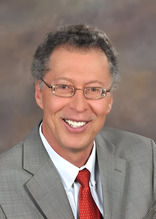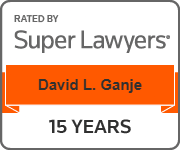Two modest water management proposals
The South Dakota Water Management Board (WMB) was created in 1955. The legislature gave authority to the Board with supervision of the waters of the state, including measurement, appropriation, and use (or abuse) of waters. The WMB consists of seven members appointed by governor.
I argue that the exercise of good water management choices is missing in South Dakota. The reader will recognize I have tried to ‘tack’ the ship of state in this direction before. I do not challenge the good faith of the WMB whose members consist of volunteer citizens with the legal authority to decide who should receive – and who should be denied – a permit or license to appropriate the public waters of the state. Nor do I challenge the WMB’s advisory agency which is the Department of Agriculture and Natural Resources. But I put on the table two unaddressed water management problems under which the WMB is given leadership with the assistance of the DANR.
Waters of the state (except those in Indian Country) are held in trust by the state government for the benefit of all the residents of the state, making members of the WMB legal trustees. Let’s call these public waters -because they are. WMB Board members are charged with protecting and managing public waters; both surface and groundwater.
On the first proposal, the Board should require a new permit applicant’s disclosure of past violations or bad acts. On the second issue the Board should require that large-quantity water-use applicants provide a hydrological report proving that the application and use permit, if granted, will not harm the recharge capacity of the aquifer, or of surface water stream which would be used by the applicant.
The first problem: Water use permit applications do not require disclosure of an applicant’s past bad acts or of an applicant’s business relationship with other operations that may have had violations of natural resources law or regulations. A properly drafted “bad actor” rule would allow the Board to deny permits to applicants with a record of law violations. This includes an applicant that had poor compliance with other agency directives or rules. The state enforces such a rule in another area of permitting known as concentrated feedlot operations. Under this law an applicant must disclose material information on their permit paperwork. Bad actors cannot hide when making a feedlot permit application. The WMB has no such rule for water permit applications. It should. The WMB has rulemaking authority to do this.
The second proposal is for a water recharge study. A particular South Dakota statute requires the WMB to determine that the average estimated withdrawal of groundwater by an applicant does not exceed the average estimated annual recharge of water in the aquifer to be used. A circuit court a few years ago ruled that using old data from existing state observation wells does not fulfill the requirements of the statute. In that case the court said that the statute “requires not only analyzing existing and historic drawdown and recharge to the aquifer, but also how the applicant’s [requested] drawdowns will affect the recharge to the aquifer.” The judge ruled that the WMB’s findings which show a draw of 720,000 gallons per day failed to consider what affect the use of 720,000 gallons per day would have on the particular aquifer. The court noted that a recharge study of the subject aquifer was not included in the application. The court reversed the approval of the permit given by the WMB.
And just this year the WMB approved a large-quantity groundwater permit without requiring a recharge study. My proposed study to be completed by an applicant would consider what effect the applicant’s use has on the aquifer. The approved applicant in a recent permitting matter would be able use up to 30,000 gallons per hour when pumping. In granting this relatively new permit the WMB relied on state observation wells and historical data without any report showing what the recharge would be on the identified water source. For a sustainable system the amount of water withdrawn from a particular aquifer should be balanced with the amount of water returned (recharged) by nature to that particular aquifer. The state’s existing water use policy which forbids the “mining” of the public’s water would be better served by requiring this specific water information. The requirement for a recharge study does not exist in the state’s current water code or in WMB rules.




